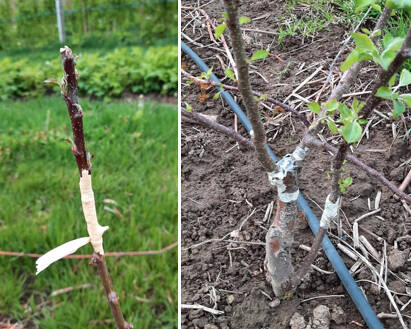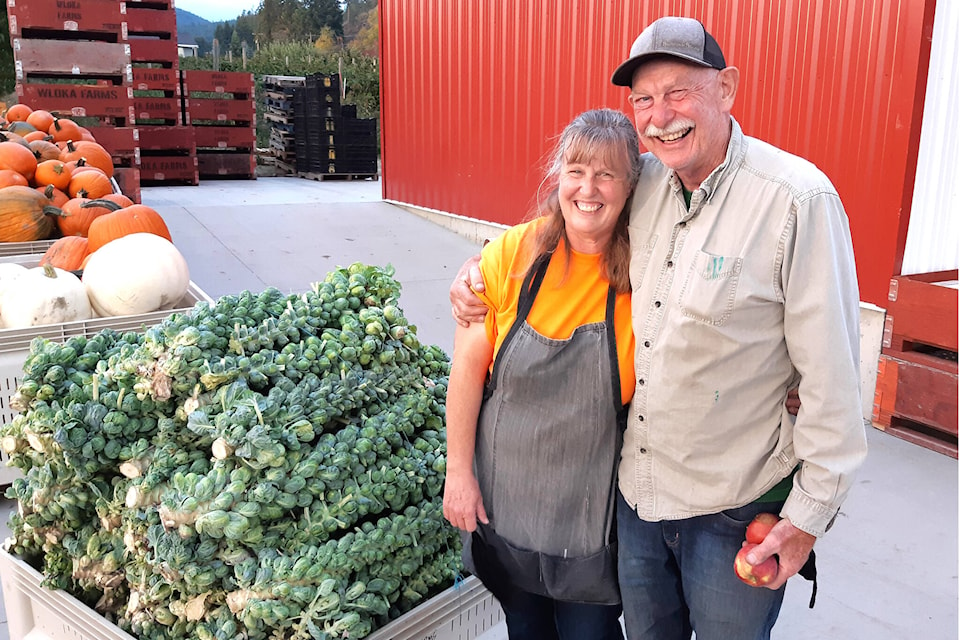Grafting is a favourite springtime job for all our staff, and one we look forward to doing annually. A successful graft lines up the cambium of the rootstock stem or host tree with the cambium of the scion wood. The cambium is the greenish layer of stem tissue between the outer and inner bark, the layer that will be actively dividing and growing during the growing season.
The scion wood must be collected while fully dormant. February is a good time in the Creston area. Ideally, it should be one year wood only (the bark will be a lighter shade) and have several healthy buds on it. Then the scion is wrapped in plastic and stored in refrigeration. If harvesting more than one variety of wood, remember to label the bags of scions!
Grafting can be performed at different times. Two options are: on to dormant rootstock in a cool indoor environment in late winter OR onto already planted rootstock or existing trees in early spring.
If the former is chosen (dormant rootstock), this should be done at least three weeks prior to planting the rootstock out in the nursery or orchard. Although the graft will not heal fully until the rootstock starts to push new growth, it will develop a callous around itself and so provide some stability for planting. Still, careful handling throughout the process of storing and planting is of utmost importance so as not to break the graft.

One of the advantages of grafting onto rootstock in an indoor situation is that this can be done in all sorts of weather and can be done at a workstation – generally easier on the body! And the grafting can be performed much faster simply because the work is in one location.
The second option for grafting is onto already established trees or rootstock in an orchard or nursery. When doing this, the grafting should be done once the host tree’s sap is flowing. Look for buds bursting and small leaves forming (bud stages at half inch green through to tight cluster). Grafting at this time is more ‘work’ in that trees are further apart and the grafts will be performed at different heights and sometimes in awkward positions. However, once grafted, the odds of breaking that graft are greatly diminished as there is no more handling. (Although a cautionary note here – big, enthusiastic dogs can snap a graft very easily! The voice of experience.)
As to what type of graft to use? There are a great many options out there (check the internet) and different ones may be used depending on the recipient rootstock or tree.
And, if the grafts don’t work, budding is always an option – done in late July/early August, this is a whole other process for combining varieties.
Barb Wloka is owner/operator of Wloka Farms Fruit Stand in Creston, B.C. She and her husband, Frank, have farmed for over 40 years, and during that time, have learned a lot through trial and error. To grow their knowledge base, both continually research and collaborate with others. They also pick up tidbits of information from staff and customers. Learning to farm is a life-long educational experience!
